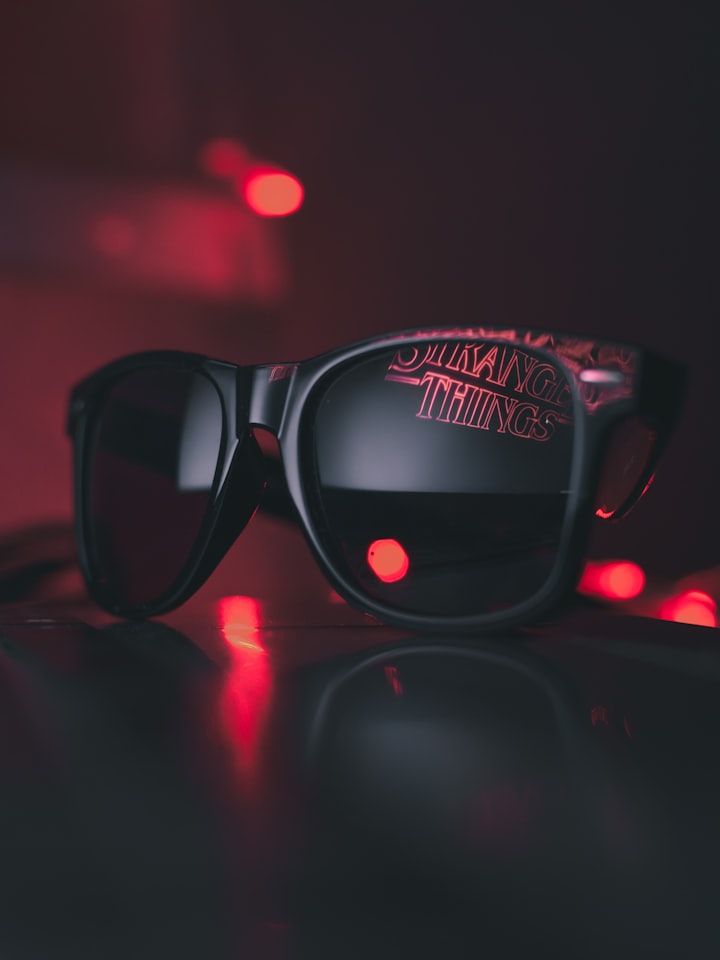Depression, Anxiety, and Stranger Things
Surviving the Upside Down World

If you’ve seen the television show Stranger Things, you are likely wondering what it has to do with depression and anxiety. You may be thinking, “Is there mention of these conditions, these mental illnesses, in the show?”
If you haven’t seen the show, good heavens! Stop working so hard, set your butt on a couch, and pull up your Netflix account. This show, soon airing its fourth season, has some of the best youth acting in history. It combines terrifyingly intense scenes with laugh-out-loud sketches, romance, displays of loyal friendship, and the deepest of familial love.
It just so happens that Stranger Things, specifically the Upside Down world that haunts the citizens of Hawkins, Indiana, is also the best depiction I have yet found of my mental illness.
According to an article on the Stranger Things fandom page, “The Upside Down is an alternate dimension existing in parallel to the human world.” As viewers soon discover, this alternate dimension is a dark, scary, and dangerous place. In Hawkins there is the normal life dimension, where everything operates and looks just like the world you and I live in. Then there is the Upside Down that penetrates the normal world; for example, a living room, a swimming pool, and a mall turn into “horror movie-versions” of those settings. In this alternate world, creatures hunt to consume and kill any human they can catch.
Commit 2 minutes and 30 seconds to watching the Stranger Things Season 1 trailer and you’ll get a sense for the Upside Down. You’ll hear the voice of Hawkins sheriff Jim Hopper explaining that the largest case he has ever had to deal with is an owl attacking a community member; the bird thought the woman’s hair was a nest. However, times soon become far more dangerous and haunting in Hawkins, Indiana.
Unfortunately, those of us with mental illness have a better idea than most of what it’s like to live in an Upside Down world.
*Content warning: Below are descriptive mentions from my mental illness experience that may be triggering for some. Please read one of my more inspirational posts if you tend to find material like this difficult.
Additionally, if you are symptomatic of mental illness and triggered by intense material, I recommend avoiding Stranger Things and trying a lighter show for the time being. Try Ted Lasso or The Office. For everyone: I advise not watching the show by yourself, especially not at night, if easily scared (as I am!).
My Upside Down World
During the worst time period of my mental illness, I lived in a small Midwest community not unlike Hawkins, Indiana. My town of 6,000 people is known for its neat yards and a church on practically every corner. Many townspeople don’t lock their car doors or even their house doors. Young kids walk home from school and ride bicycles by themselves in the summer to hang out at the local pool.
My external world was just like that of Hawkins, Indiana. If I’m being honest, probably even more idyllic. Moreover, I had many family members who loved me and cared for me living in the town.
Yet the presence of the mental illnesses--major depressive disorder (MDD) and generalized anxiety disorder (GAD)--turned every second of existence into an Upside Down world. Life itself appeared bleak and terrifying to me. My body felt awful: my heart-pounded, it felt like I weighed 500 lbs., I was tired constantly, my hands shook, and I had headaches. My thoughts tortured me: they raced at high speeds, looping on negativity and worry. A kitchen knife, a second floor window, a sharpened pencil all turned into potential death devices.
As a 6’2” male college athlete, I curled into a ball in my dorm room or in my grandma’s guest room, crying, shaking, hyperventilating in a panic attack for fear of this torturous existence. My brain diseases turned my seemingly wonderful life into a living hell, an Upside Down world.
The amount of time living in my Upside Down world is tough to calculate. But I estimate that I spent seven to eight years of my life in this place, somewhere between 2,555 and 2,920 days.
On the outside, my situation appeared serene. I was blessed with physical safety and more material advantages than many others enjoy. My external appearance mimicked that of an ordinary young man, actually, one with a really good life. Pictures during two of my worst years reveal smiling versions of Nate and a Nate competing in soccer.
And yet, my brain--the very organ that forms thoughts, feelings, memories and emotions--the core of our personhood--was diseased and creating the Upside Down world through which I perceived every moment. I was so scared and often saw ending my own life as the only escape from the horror.
Fighting the Upside Down
In Stranger Things, a few characters display some pretty remarkable abilities. They alone are able to fight against the Upside Down world. These powers even enable them to close down the portals that allow this alternate dimension to appear in the normal world.
After years of fighting my diseases with prayer, psychological techniques, therapy methods, exercise, sunlight, nutrition, meditation, and combinations of psychiatric medications, my psychiatrist and I have found two meds--Zoloft and Abilify--that close the portal into the Upside Down world. They relieve the symptoms of my brain diseases. These two medications must hit the cellular receptors in my brain just right, modify the chemicals (neurotransmitters), and thus enable me to approximate full mental health. The horror of my diseased perception dissipates in favor of a very normal, realistic worldview. Gone is the crying, suicidal thoughts, or panic attacks. It’s just Nate, living his life.
These two medications have completely changed my reality. I have finally been able to admit that yes, life can be good. Everything in my world looks the same as before through my visual field, but my healthy brain perceives the images in a completely different way. A kitchen knife is just a tool to cut my avocado or chicken. The second-floor window is just a window that provides light and the occasional opportunity to gaze outside. A pencil is just a writing utensil by which I can support my love for learning by taking notes or underlining important sentences in my books. The mountains, trees, and beaches I see while traveling transform from lackluster mirages into colorful objects of immense beauty. I experience presence in my environment like never before. The real Nate Huyser is actually here.
When the characters in Stranger Things get out of the Upside Down world and back into normal Hawkins, they are relieved to say the least. They are grateful to have escaped with their lives intact and receive a respite from the horror. So too am I relieved to have survived my illness. I am grateful that I am alive. I am grateful that I did not do permanent injury to my body. And I am grateful that I avoided any legal trouble while in my impaired state.
By this stage in my life, I have also learned much about my illnesses. I have learned, for the second time, the efficacy of Zoloft and Abilify for my health. I have learned not to drink any alcohol while taking these medications. I have learned therapy methods and meditation techniques. I now have a more mature and developed 27-year-old brain.
The Upside Down is gone for now, but . . .
While I hope with every fiber of my being that my good mental health state is permanent, I must live with the reality that my Upside Down world could come back. How do I deal with this possibility?
Well, much like the citizens of Hawkins, Indiana . . .
- I enjoy the respite. I make the most of the healthy time I get and enjoy relationships with others.
- I live humbly, knowing just how fragile my mental health is, and even life itself. I take my medications daily, avoid alcohol, attend therapy, meditate, exercise, and eat well.
- I prepare for the potential return of the Upside Down. I inform family and friends how beneficial their support was during my worst times. I also share how their support could be improved if I become sick again.
Not Fiction
IMDb tells me that the genre of Stranger Things is drama, horror, and science-fiction (also thriller, mystery, and fantasy). I understand this capacity for several genres at once. Severe mental illness does indeed create drama--conflicts in friendships and family relationships. Severe mental illness does indeed create horror--suffering, panic, suicide, delusions, violence, crime. Severe mental illness does indeed involve science--neuroscience (the study of the brain and nervous system) and psychiatry/medicine.
Sadly, severe mental illness is not fiction like Stranger Things. It is a reality for me and many others trying to escape the Upside Down world.
About the Creator
Nate Huyser
I never imagined I would write. English was my least favorite subject in school. I preferred science and math. But then I suffered from severe mental illness... for years. I hope you find that my stories and ideas are worth sharing.






Comments
There are no comments for this story
Be the first to respond and start the conversation.